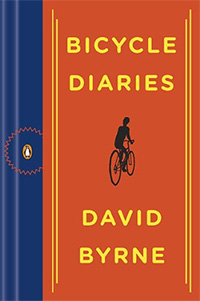You could say that I've become a bit of a bicycling advocate. The two-wheeled angle certainly stems from my own recent exposures to narrow shoulders and obdurate drivers, but really, pushing for a cycling-friendly environment has much more to do with sustainability and democracy.
Democracy, because pedestrian areas are by definition available to everyone and anyone in a way that roads and streets are not. Sustainability, because folks interact with their urban environments more intimately on foot and on bike; as I wrote last week, that interaction could lead to culturally active neighborhoods across a city like Albuquerque.
Some of the biggest obstacles to a vision of a truly pedestrian-friendly American city are, as Mercury commenter Margaret Randall puts it, "a) that developers care about something beside making money, and b) that zoning laws, investment, etc. be conceived of and implemented with quality of life in mind." Such obstacles are certainly daunting in a sprawled and largely corporatized city like Albuquerque.
However, among his many musings and interesting tidbits, David Byrne offers a glimpse of success. Near the end of Bicycle Diaries, Byrne discusses an urban planner named Jan Gehl.
Gehl, according to Byrne, "has successfully transformed Copenhagen into a pedestrian- and bike-friendly city. At least one-third of Copenhagen's workforce gets to work on bikes now! He says it will approach half soon."
In Albuquerque, most of the folks who would even think about a radical pedestrian conversion would feel that the city government and residents would never go along with it.
Byrne continues, "Gehl reveals that his proposals initially met with exactly that kind of opposition over there: the locals said, 'We Danes will never agree to this -- Danish people won't ride bikes...
Previously, the area bordering this canal [shown in a photograph in the book] had been used for parking; cars would drive along it looking for parking slots. This lovely spot was, not too long ago, primarily an ugly parking lot and a thoroughfare. Now it's a destination. Cars are still allowed to drive here, but not park. And from that one small change the area exploded as a pleasant gathering place and even as a tourist destination. Expensive 'improvements' by the city weren't even necessary to allow this to happen. The customers and local businesses did the improvements -- putting out chairs and installing awnings -- though many of them initially complained that if people couldn't park in front of their establishments their businesses would suffer. That seems to be how Gehl works, making fairly small incremental changes over many years, here and there, that eventually transform the whole city and make it a more livable place...
Enrique Peñalosa implemented a similar plan in Bogotá, as well as creating the longest pedestrian (and bike) street in the world -- twenty kilometers. He began by closing select streets on weekends, and then gradually, as businesses realized that this actually increased sales and improved the general mood, he added more days and closed more streets. It transformed the life of the city. Needless to say, it reduced the congestion as well. People came in contact with each other more often, went strolling, and enjoyed their city. Peñalosa had to fight an alternative plan that was already on the table -- a $600 million highway project that would have both destroyed large parts of the city and not solved the problem.
Small changes beget big changes. Neuroscience has revealed that making your bed each morning can build in your brain a sense of accomplishment and success that spills into other activities and your general sense of well-being. Imagine if we tried for small and foundational steps toward pedestrian well-being in every American city! The sorts of changes I propose in my article, and that other (and more knowledgeable) urban leaders have already implemented in large cities, don't necessarily need the initial approval of profit-driven developers. They simply need a few people willing to take some harebrained baby steps.




Responses to “Breaking the cycle followup: David Byrne’s Bicycle Diaries”